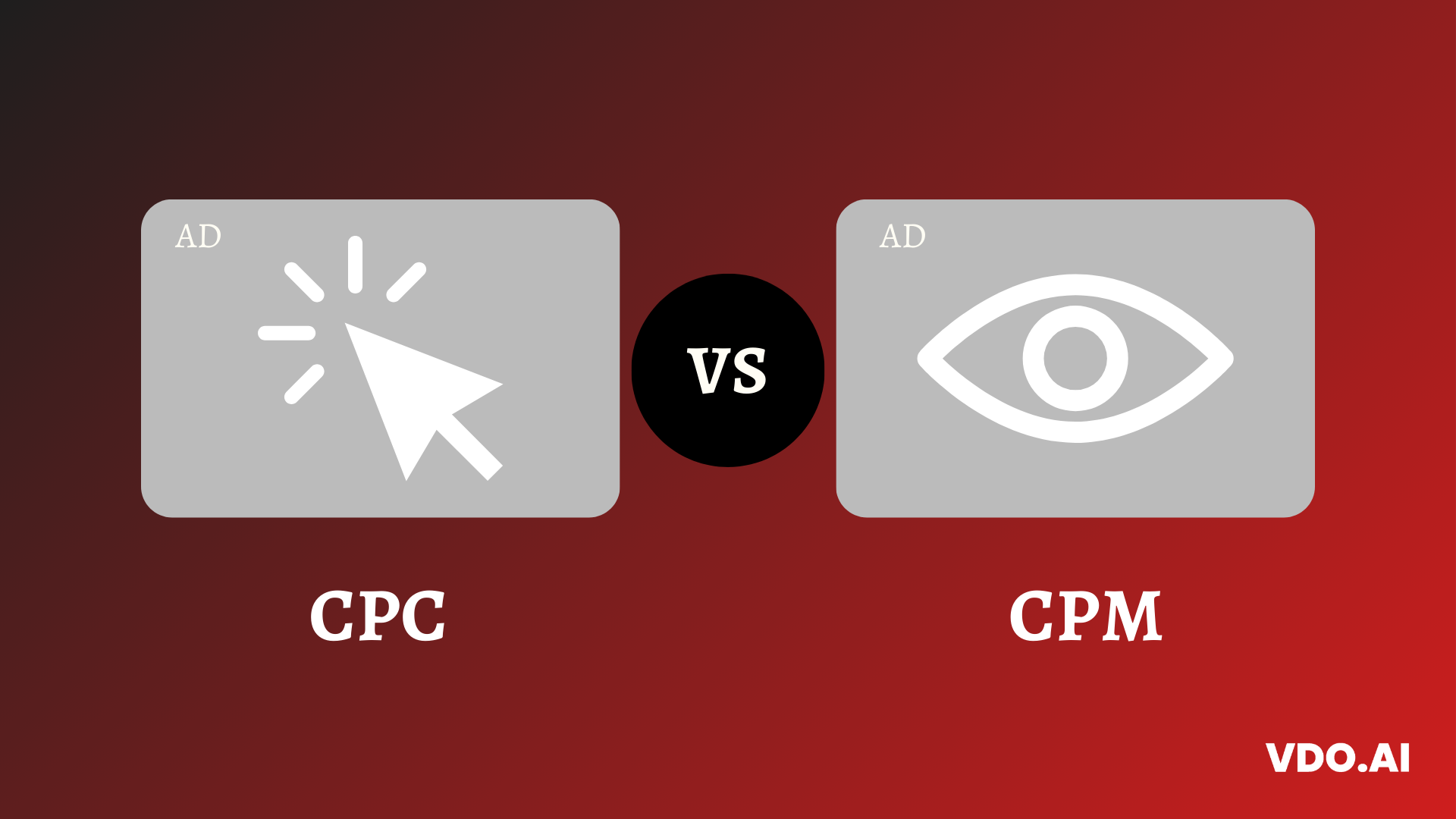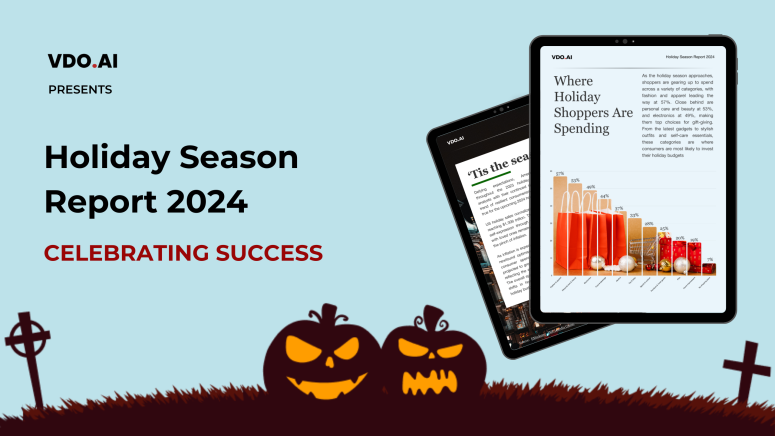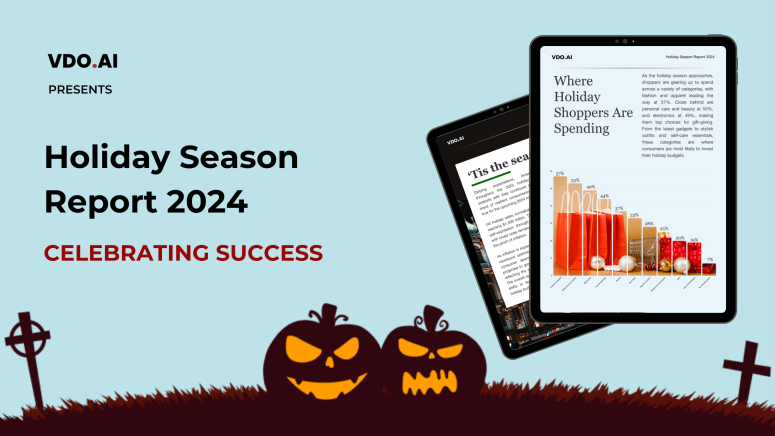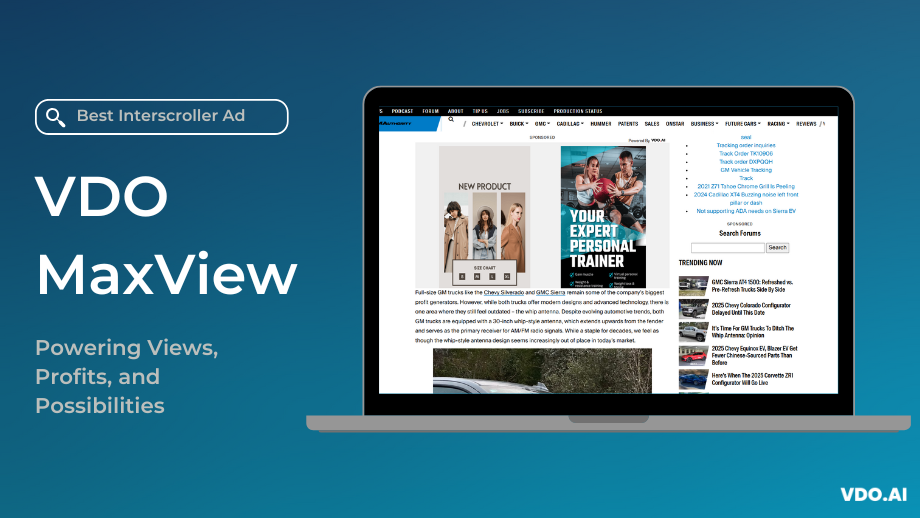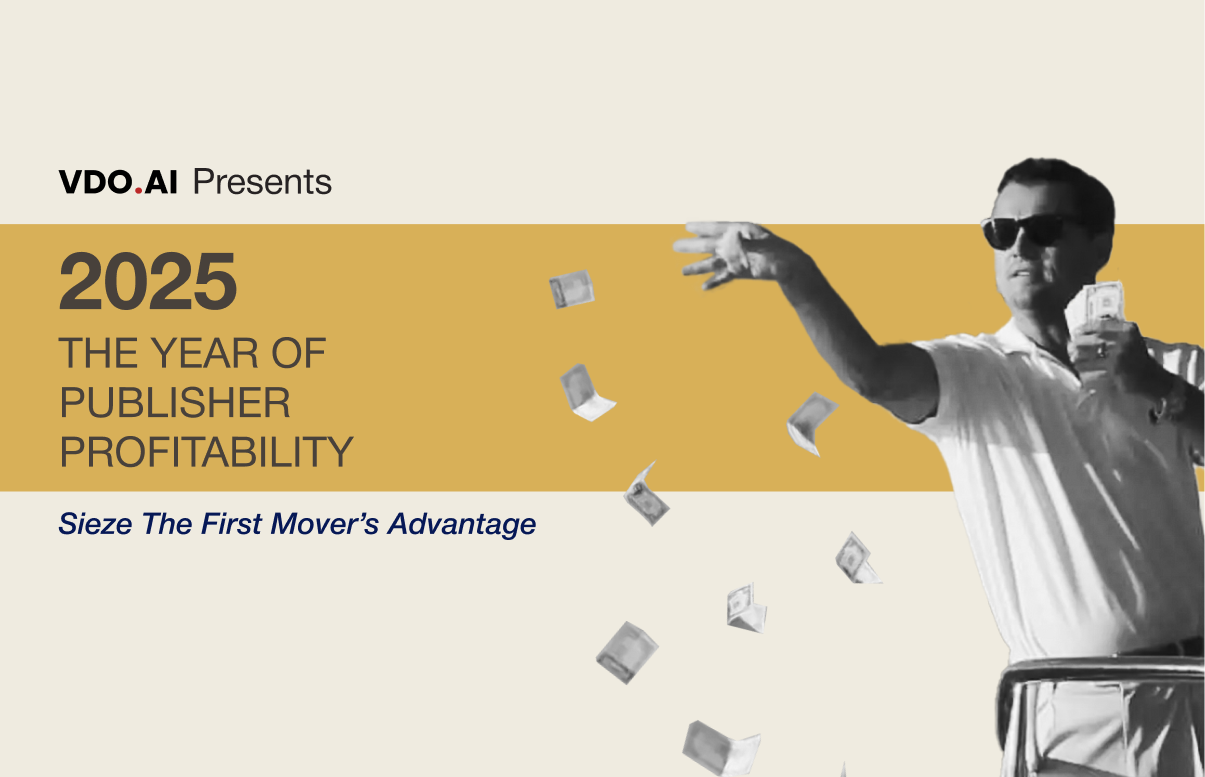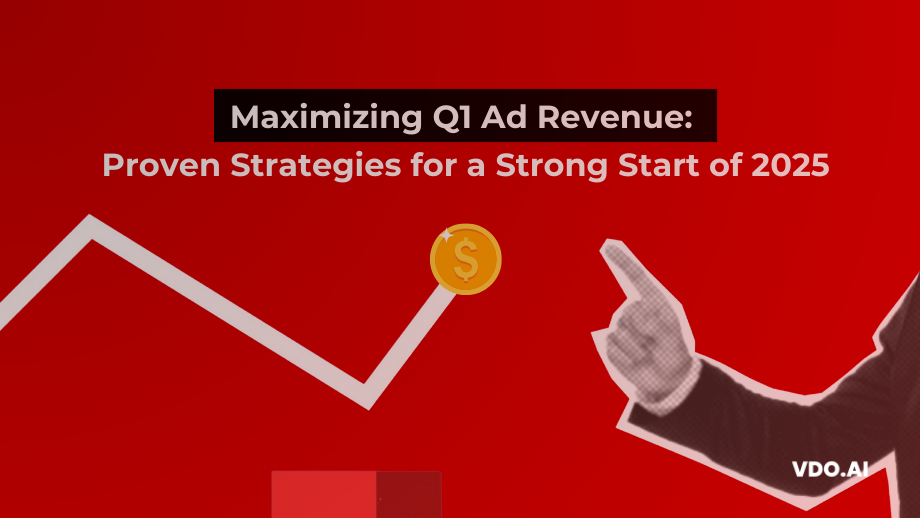CPC vs CPM: Understanding Ad Revenue Models for Website Monetization
Reading Time: 4 minutesWhen it comes to digital advertising, determining the most effective metrics for maximizing ad revenue is crucial. That said, many publishers find themselves at a crossroads while choosing between Cost Per Click (CPC) and Cost Per Mille (CPM) for monetizing their websites.
We understand this dilemma, having heard it echoed frequently from our publishers. This guide serves as your ultimate resource for unraveling the differences between CPC and CPM, providing valuable insights into their impact on ad revenue and website monetization strategies. Let’s delve into the intricacies and unlock the secrets behind these two influential ad models!
Also, check out: Our Publisher Suite for High-yielding and Engaging Ad Formats for Generating Higher Ad Revenue
CPC (Cost Per Click): Driving Revenue Through Clicks
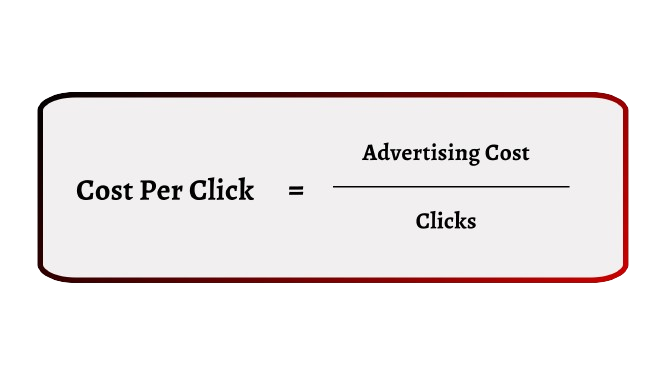
CPC, also known as Pay Per Click (PPC), is an advertising model where advertisers pay publishers a fee each time their ad is clicked. This model is favored by advertisers seeking a direct response from their target audience. With CPC, publishers earn revenue based on the number of clicks generated by the ads displayed on their platforms.
Maximizing Revenue Potential with CPC
CPC offers publishers the opportunity to maximize revenue potential through targeted content and optimized ad placements. By leveraging CPC campaigns, publishers can attract high-intent users and drive engagement, ultimately leading to increased ad clicks and revenue.
CPM (Cost Per Mille): Monetizing Impressions
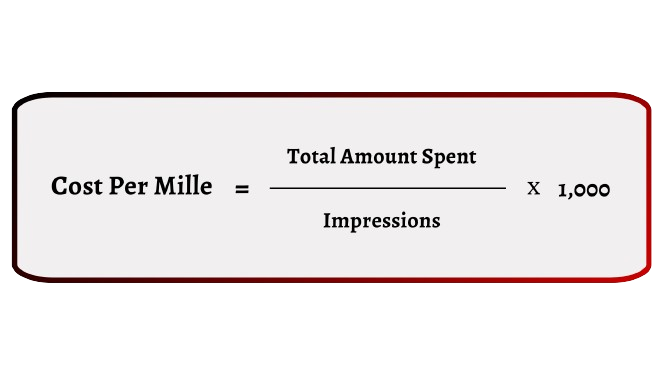
CPM, on the other hand, stands for Cost Per Mille, where “mille” refers to one thousand impressions. In this model, advertisers pay a fixed rate for every one thousand impressions of their ad, regardless of whether users interact with the ad or not.
Harnessing the Power of Impressions with CPM
CPM is ideal for publishers with high traffic volumes looking to monetize their platforms efficiently. By focusing on impressions rather than clicks, publishers can generate revenue from ad placements based on the sheer volume of views, making CPM a popular choice for display advertising.
Quick Comparison between CPC and CPM
| Aspect | CPC (Cost Per Click) | CPM (Cost Per Mille) |
| Calculation | Advertisers pay per click on ads. | Advertisers pay per 1000 impressions of ads. |
| Revenue Model | Publishers earn based on clicks. | Publishers earn based on impressions. |
| Interaction Focus | Emphasizes user clicks and direct actions. | Focuses on ad impressions, regardless of user interaction. |
| Suitability | Ideal for high-engagement content. | Suitable for platforms with high traffic but lower engagement. |
| Campaign Goals | Effective for driving conversions or specific actions. | Commonly used for brand awareness campaigns. |
| Tracking Metric | Monitored through click-through rates (CTR). | Evaluated using effective cost per mille (eCPM). |
| Flexibility | Provides flexibility in ad placement and targeting. | Offers consistent revenue stream based on the volume of views. |
Choosing the Right Model: Factors to Consider for CPC and CPM
Audience Engagement and Interaction
CPC: Publishers targeting audiences with high engagement levels may benefit from CPC, as it rewards clicks and direct actions.
CPM: Platforms with significant traffic but lower user engagement can capitalize on CPM, earning revenue based on ad impressions.
Ad Type and Placement
CPC: Ads that encourage user interaction and click-throughs, such as rich media ads, align well with CPC campaigns.
CPM: Websites or apps with extensive reach and consistent traffic across various static and banner ad types are suited for CPM, as it monetizes impressions regardless of user engagement.
Advertiser Goals and Campaign Objectives
CPC: Advertisers aiming for specific actions, such as conversions or sign-ups, typically opt for CPC to drive direct response and measurable outcomes.
CPM: Brand awareness campaigns seeking broad reach and visibility often choose CPM, focusing on maximizing ad exposure and impressions.
To Sum Up…
Understanding the distinctions between CPC and CPM empowers publishers to make informed decisions when monetizing their websites. By aligning revenue models with audience engagement, content strategy, and advertiser goals, publishers can optimize their monetization strategies for maximum profitability and sustained growth.
Moreover, it is important to note that CPC bidding is mainly used for Search Network campaigns, and CPM bidding is primarily used for Display Network campaigns.
If you want to gain deeper insights on the working and functionality of CPC and CPM, for better ad revenue generation, contact us. We provide plentiful monetization strategies to diversify revenue streams with better 24/7 support and a 500+ advertiser hub.
FAQs (Frequently Asked Questions)
Can publishers use a combination of CPC and CPM?
Yes, publishers often employ a hybrid approach, leveraging CPC for certain ad placements and CPM for others, to optimize revenue streams based on content and audience dynamics.
How can publishers track performance and optimize revenue under each model?
Utilizing robust analytics tools to monitor metrics such as click-through rates (CTR) for CPC and effective cost per mille (eCPM) for CPM enables publishers to assess performance and refine website monetization strategies accordingly. Many publishers also join ad exchanges like VDO.AI which offer real-time insights into the performance of the campaign.
Are CPC and CPM equally effective for website monetization?
While both models can be effective for website monetization, the choice depends on factors such as engagement levels, user behavior, and advertiser preferences.
90% of Our Publishers Increased Revenue by 75%!
